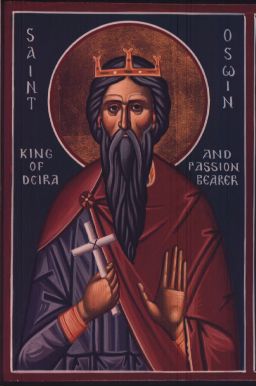
The 8th century is the period from 701 through 800 (DCCC) in accordance with the Julian Calendar.
The 630s decade ran from January 1, 630, to December 31, 639.
The 640s decade ran from January 1, 640, to December 31, 649.
The 580s decade ran from January 1, 580, to December 31, 589.

Year 634 (DCXXXIV) was a common year starting on Saturday of the Julian calendar. The denomination 634 for this year has been used since the early medieval period, when the Anno Domini calendar era became the prevalent method in Europe for naming years.

Year 638 (DCXXXVIII) was a common year starting on Thursday of the Julian calendar. The denomination 638 for this year has been used since the early medieval period, when the Anno Domini calendar era became the prevalent method in Europe for naming years.
Year 679 (DCLXXIX) was a common year starting on Saturday of the Julian calendar. The denomination 679 for this year has been used since the early medieval period, when the Anno Domini calendar era became the prevalent method in Europe for naming years.

Year 913 (CMXIII) was a common year starting on Friday of the Julian calendar.

Year 905 (CMV) was a common year starting on Tuesday of the Julian calendar.

Year 934 (CMXXXIV) was a common year starting on Wednesday of the Julian calendar.

ʿUmar ibn al-Khaṭṭāb was the second Rashidun caliph, ruling from August 634 until his assassination in 644. He succeeded Abu Bakr as the second caliph of the Rashidun Caliphate on 23 August 634. Umar was a senior companion and father-in-law of the Islamic prophet Muhammad. He was also an expert Muslim jurist known for his pious and just nature, which earned him the epithet Al-Fārūq. The title Amir al-Mu'minin was held by Umar ibn Khattab who was also the first one to be given this title.
Yazid ibn Abi Sufyan ibn Harb ibn Umayya was a leading Arab Muslim commander in the conquest of Syria from 634 until his death in the plague of Amwas in 639. Following the capture of Damascus around 635, he was placed in command of the city and its military district. After the death of the overall Muslim commander of Syria, Abu Ubayda ibn al-Jarrah, in 639, he was appointed by Caliph Umar the governor of Damascus, Jordan and Palestine.

The siege of Jerusalem (636–637) was part of the Muslim conquest of the Levant and the result of the military efforts of the Rashidun Caliphate against the Byzantine Empire in the year 636–637/38. It began when the Rashidun army, under the command of Abu Ubayda, besieged Jerusalem beginning in November 636. After six months, the Patriarch Sophronius agreed to surrender, on condition that he submit only to the Caliph. According to Islamic tradition, in 637 or 638, Caliph Umar traveled to Jerusalem in person to receive the submission of the city. The Patriarch thus surrendered to him.
Omar Koshan, also known as Jashn-e Hazrat-e Zahra, is a yearly festival held by some Twelver Shi'i Muslims in Iran. Originally, the festival commemorated the assassination of the second caliph Umar ibn al-Khattab by the Persian slave Abu Lu'lu'a Firuz.

Abū Luʾluʾa Fīrūz was a Sasanian Persian slave known for having assassinated Umar ibn al-Khattab, the second Islamic caliph, in November 644.

A panemone windmill is a type of vertical-axis wind turbine. It has a rotating axis positioned vertically, while the wind-catching blades move parallel to the wind. By contrast, the shaft of a horizontal-axis wind turbine (HAWT) points into the wind while its blades move at right-angles to the wind's thrust. That is, a panemone primarily uses drag whereas the blades of a HAWT use lift.

The Tang campaigns against the Western Turks, known as the Western Tujue in Chinese sources, were a series of military campaigns conducted by the Tang dynasty against the Western Turkic Khaganate in the 7th century AD. Early military conflicts were a result of the Tang interventions in the rivalry between the Western and Eastern Turks in order to weaken both. Under Emperor Taizong, campaigns were dispatched in the Western Regions against Gaochang in 640, Karasahr in 644 and 648, and Kucha in 648.

The Tang campaigns against Karasahr were two military campaigns sent by Emperor Taizong of the Tang dynasty against the Tarim Basin kingdom of Karasahr, a vassal of the Western Turkic Khaganate. The city-state, which later became part of Xinjiang), may have been known to its inhabitants by the Tocharian name Agni, which was rendered Yanqi in Chinese sources. The first campaign in 644 was led by the Tang commander Guo Xiaoke, protector-general of the Anxi Protectorate in western China, who defeated the oasis state and a Western Turkic army and installed a Tang loyalist as ruler. The second campaign in 648, which was part of the campaign against Karasahr's neighboring state of Kucha, was led by a Turkic general of the Tang dynasty, Ashina She'er, who defeated and conquered Karasahr.

The Sassanid Empire or Sassanian Dynasty is the name used for the Persian dynasty which lasted from 224 to 651 AD.

The Shrine of Abu Lu'lu'a is a mausoleum built over what is popularly believed to be the final resting place of Abu Lu'lu'a Firuz, a Persian slave who assassinated the second Islamic caliph Umar ibn al-Khattab in 644 CE. The structure was built by the Ilkhanid Mongols, and is located in Kashan, Isfahan Province, Iran.














